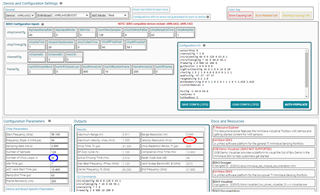While playing around with my IWRL6432 radar configuration in the mmWave Sensing Estimator, I noticed an inconsistency in the Velocity Resolution calculation.

As you can see, we are in "Burst Mode", we have 2 Tx antennas, 16 bursts per frame and 2 chirps per burst (1 for each Tx antenna). A burst lasts 800us.
numOfChirpLoops = numOfBurstsInFrame * numOfChirpsInBurst / numOfTxAntennas


